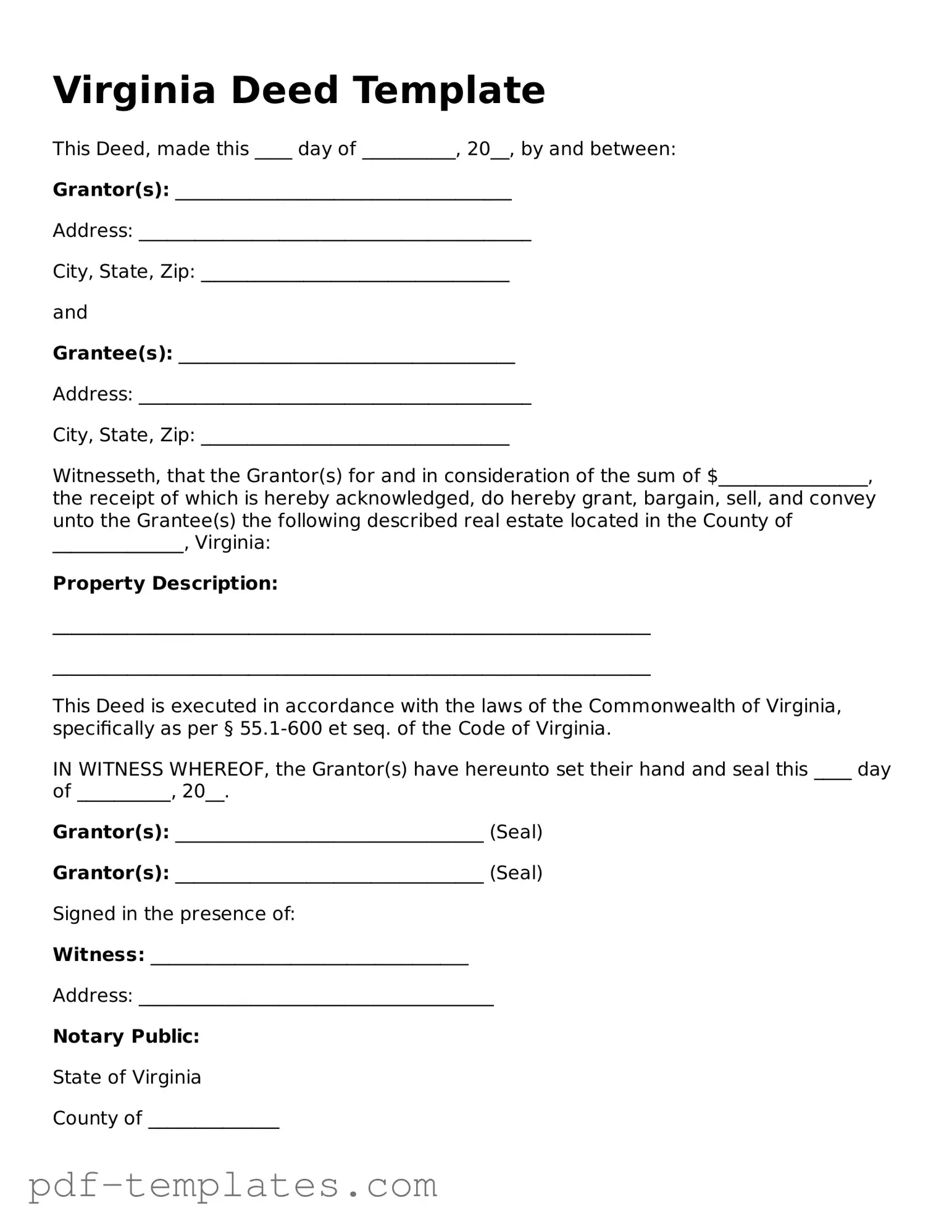The Virginia Deed form is similar to a Warranty Deed, which provides a guarantee that the seller holds clear title to the property and has the right to sell it. This document assures the buyer that there are no undisclosed encumbrances or claims against the property. When a Warranty Deed is executed, the seller is legally bound to defend the title against any future claims. This level of protection makes it a popular choice for real estate transactions.
Another document akin to the Virginia Deed is the Quitclaim Deed. Unlike a Warranty Deed, a Quitclaim Deed transfers whatever interest the seller has in the property without any guarantees. This means that if the seller has a weak or unclear title, the buyer may end up with nothing. It’s often used in situations like transferring property between family members or in divorce settlements, where the parties know each other’s interests.
The Special Warranty Deed is also similar, but it provides limited protection. This document guarantees that the seller has not caused any issues with the title during their ownership but does not cover claims that arose before their ownership. This makes it a middle ground between a Warranty Deed and a Quitclaim Deed, often used in commercial real estate transactions.
The Bargain and Sale Deed resembles the Virginia Deed in that it conveys ownership of the property but without any warranties against encumbrances. This type of deed implies that the seller has the right to sell the property but does not guarantee a clear title. It’s often used in tax foreclosure sales or by fiduciaries selling property on behalf of another party.
Then there’s the Grant Deed, which is similar to the Virginia Deed in that it conveys ownership and implies that the property has not been sold to anyone else. It offers some assurances to the buyer, such as the seller’s right to sell and that the property is free from encumbrances created during the seller's ownership. This type of deed is commonly used in several states, providing a bit more security than a Quitclaim Deed.
The Title Transfer Document shares similarities with the Virginia Deed in that it formally changes ownership of the property. However, it may not include the same legal protections or warranties. This document is often used in informal transactions or when transferring property between parties who have a high level of trust.
Another related document is the Deed of Trust, which is used primarily in real estate financing. While it serves a different purpose—acting as security for a loan—it involves the transfer of title to a trustee until the borrower pays off the loan. This document ensures that the lender has a claim to the property if the borrower defaults, similar to how a Virginia Deed establishes ownership rights.
For those considering their healthcare options, understanding the implications of a Do Not Resuscitate Order is vital. It is important to express your wishes clearly, and you can begin this process by reviewing a comprehensive guide on the Do Not Resuscitate Order form, which can be found here.
The Affidavit of Title is often used in conjunction with a deed. While it is not a deed itself, it provides a sworn statement by the seller about the status of the property’s title. This document can help assure the buyer of the seller's ownership and the absence of liens or claims, making it a useful companion to the Virginia Deed.
The Bill of Sale is another document that, while primarily used for personal property, shares the essence of transferring ownership. It outlines the sale of goods or personal items and serves as proof of ownership transfer. In real estate, a Bill of Sale may accompany a deed when personal property is included in the sale, such as appliances or furniture.
Lastly, the Leasehold Deed conveys the rights to use a property for a specified period, similar to a Virginia Deed in that it establishes an interest in the property. However, it does not transfer full ownership. This document is common in situations where land is leased for a long term, allowing the lessee to use the property while the lessor retains ownership rights.
